5 and a million things to do in Myanmar
By the time I finally landed in Myanmar, I was toeing the line between wakefulness and fatigue. Geographically, it is only a sea and four countries away from the Philippines, but I spent the wee hours of the morning in a 7-hour layover in Singapore before finally arriving. The blast of heat when I stepped out of the airport had me snapping into alertness — I was in the Golden Land for the first time.
We were greeted in the airport by Myanmar travel bloggers, who organized the Familiarization Trip that I was invited to. They welcomed us with warm smiles and streaks of yellow cream on their faces, which I would later learn was thanakha, a multipurpose cosmetic paste.
The tail end of the cool season was a strange time to be there — my body could not make sense of the weather. The heat of the sun tended to be harsh, soothed only by the chilly winds.
The seasons were one of the first things our tour guide, Win Ko Kyaw, explained. Myanmar had three: cool, hot, and rainy.
The first day there was spent recuperating, but the second day kicked off the adventure of a lifetime. Seven days was not nearly enough. If you're planning to go to Myanmar, you're in for a blast. Here are some suggestions of what to do and what to see to make the trip worth it.
Light 1000 candles at the Shwe Dagon Pagoda and make a wish. The first thing we did was visit the Shwedagon Pagoda. The gilded stupa towers over most of Yangon and is considered the most sacred pagoda across the country. In the words of our tour guide, your Myanmar trip would not be complete if you didn't spend some time inside.
Ninety percent of Myanmar's 54 million population are Buddhists, with half a million monks living among them. Throughout the day, visitors come and go in the Shwe Dagon Pagoda, offering flowers and food, kneeling and praying in front of the Buddha relics.
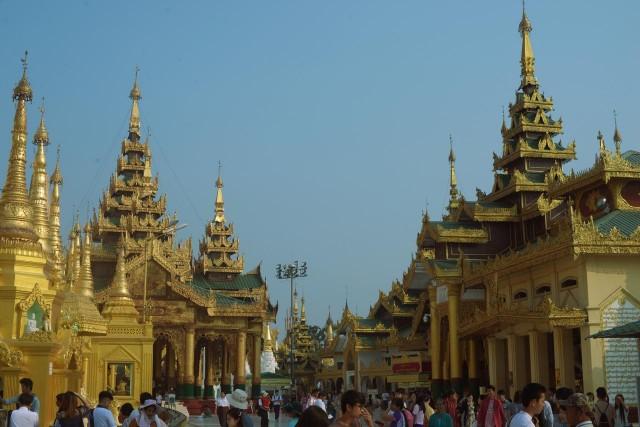
Shoes are not allowed inside the pagoda — that goes for all pagodas in Myanmar. As a sign of respect, visitors must remember to wear sleeves that cover the shoulders and bottoms that go past the knees.
We visited the pagoda early morning, wearing the traditional Burmese dress given to us by the organizers. We returned there in the evening and had the chance to light 1,000 candles. Tip: when lighting the candles, make a wish.
Shop and eat at the Bogyoke Market. Also located in Yangon is the Bogyoke Market, also known as Scott's Market. While Yangon is no longer Myanmar's capital city (that title now goes to Nay Pyi Taw), it remains to be the commercial center.
Bogyoke Market is busy and crowded, and you can buy all sorts of things inside, including jades and rubies, which Myanmar is famous for.
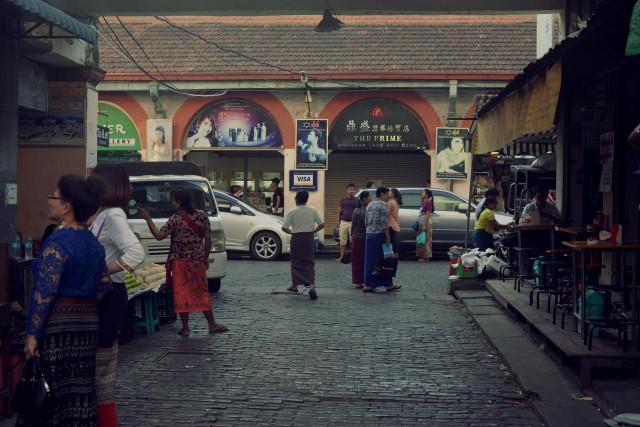
I visited the market twice, because I found that it was the best way to get a feel of the local street scene. All kinds of people, all wearing longyi, hobble across the cobbled streets, drifting from store to store.
Aside from shopping, you can get a taste of Myanmar street food inside the market, such as pork rice noodles, Mont Sein Paung, which is made of rice powder and jaggery, and Ohone Noe Thar Gu, a sweet delicacy made of coconut and sago.
Watch the sunrise and go horse cart riding in Bagan. It took us 11 hours to reach Bagan from Yangon via bus. We left in the evening and I awoke the next morning to a wash of pink skies. When I disembarked for a toilet break, I immediately started to shiver -- in the mornings and evenings, the weather in the ancient city is truly cold.
Bagan is home to more than 2,000 temples, built in the 10th and 14th centuries. Recently, the government has banned tourists from scaling the pagodas, but you can still enjoy the sight of them by horse cart riding across Old Bagan.
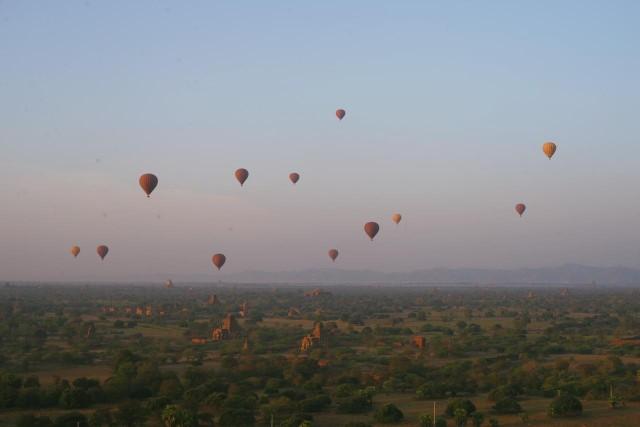
There are also certain temples that are open to visitors, such as the Shwezigon Pagoda, Dhammayangyi Pagoda, and the Ananda Pagoda.
I was able to catch the popular hot air balloons during the second sunrise of our stay in Bagan. From the watch tower I was perched on, I could clearly see the field of temples, and over them, the balloons swayed.
Cruise through Inle Lake and visit the Shwe Indein Pagoda. It feels like a different world in Inle Lake, and it was most definitely my favorite destination in the entire trip. The lake, which spans 22 kilometers long and 10 kilometers wide, is located in the town of Nyaungshwe in Shan State. It was about a 9 hour bus ride from Bagan.
We cut through the still waters via motor boat, and encountered one of the fishermen who have turned their craft into a dance. He did some balancing acts for us, and he rowed away balancing on his boat with one leg, the other wrapped around the oar.
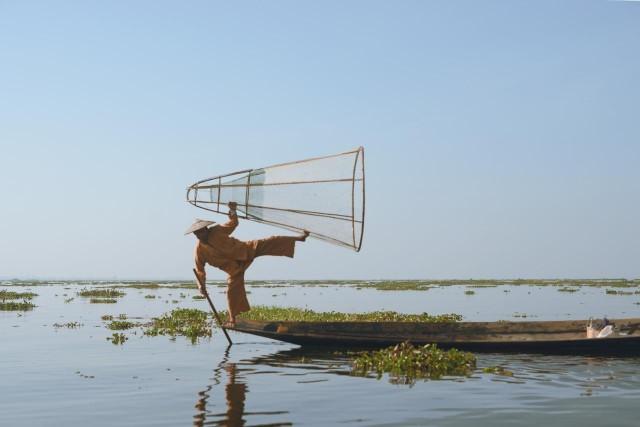
Later, when we reached the villages built on stilts and saw its residents -- the Intha people -- navigating the water in their boats, I learned that the unique leg-rowing is a traditional practice for men.
Aside from the floating village, we were also able to visit the Shwe Indein Pagoda in Indein Village, located in the west side of Inle Lake. It must be my favorite pagoda out of all we visited.
The Shwe Indein Pagoda has a dense cluster of ancient pagodas, some of which are crumbling and in ruins, but many are also glimmering gold.
Immerse in Myanmar's rich culture. Myanmar is not a particularly rich country. In a lot of ways the country is still backwards. Weavers slave for hours on end to create eight grams worth of thread. Locals resort to charging tourists for money if their photo is taken, making gestures that I took to mean "food," or maybe "hungry." One of the country's travel bloggers disclosed that some government offices don't even have computers.
But the country is rich in other ways, such as natural resources, the main source of Myanmar's revenue. And the way its people hold on their traditions and culture is something Filipinos could learn from.
The people of Myanmar are proud of their culture, and they are always willing to share it. One of the highlights of my trip was when an elderly lady caught me wandering alone and taught me how to weave. We didn't understand a word of what the other was saying, but she was determined to make me understand, and so I did.
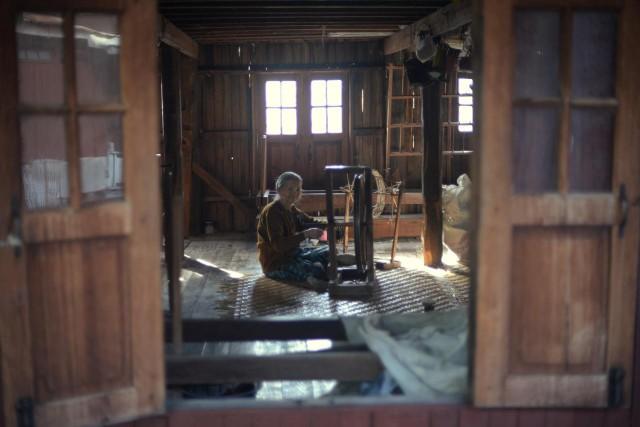
So to those planning to visit Myanmar, do what its people do. Wear thanakha. Wear their traditional longyi. Watch their puppet shows. Eat mohingar.
Get to know the people. Watch how they create their traditional lacquerware, and watch how they create threads from nothing but lotus stems. Learn about the ethnic groups, learn about their history.
There is more to Myanmar than its shiny temples. — LA, GMA News



